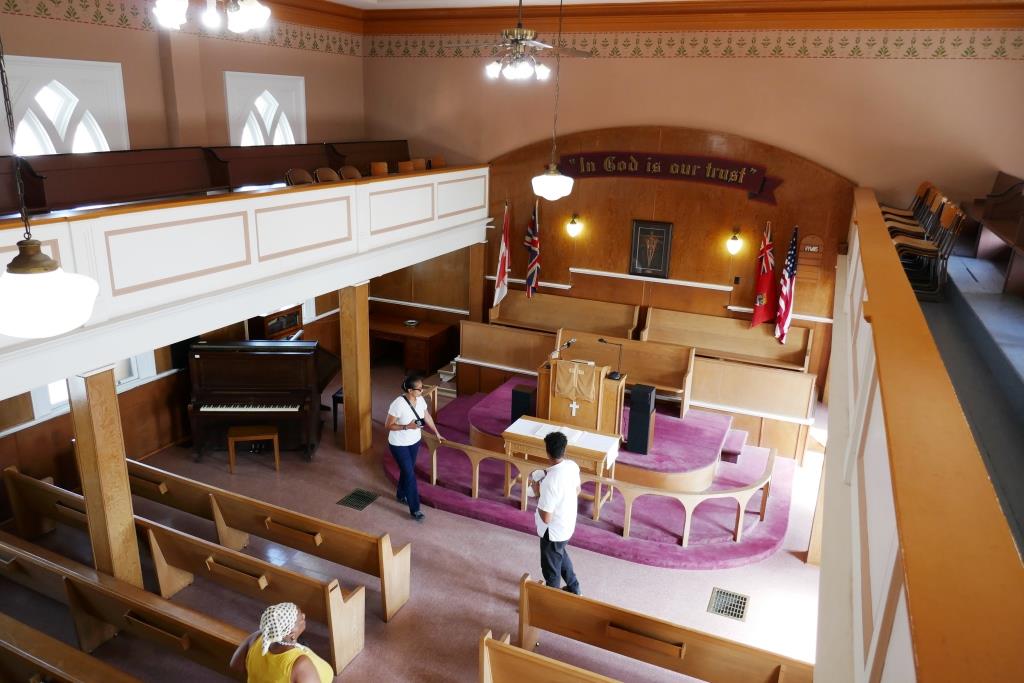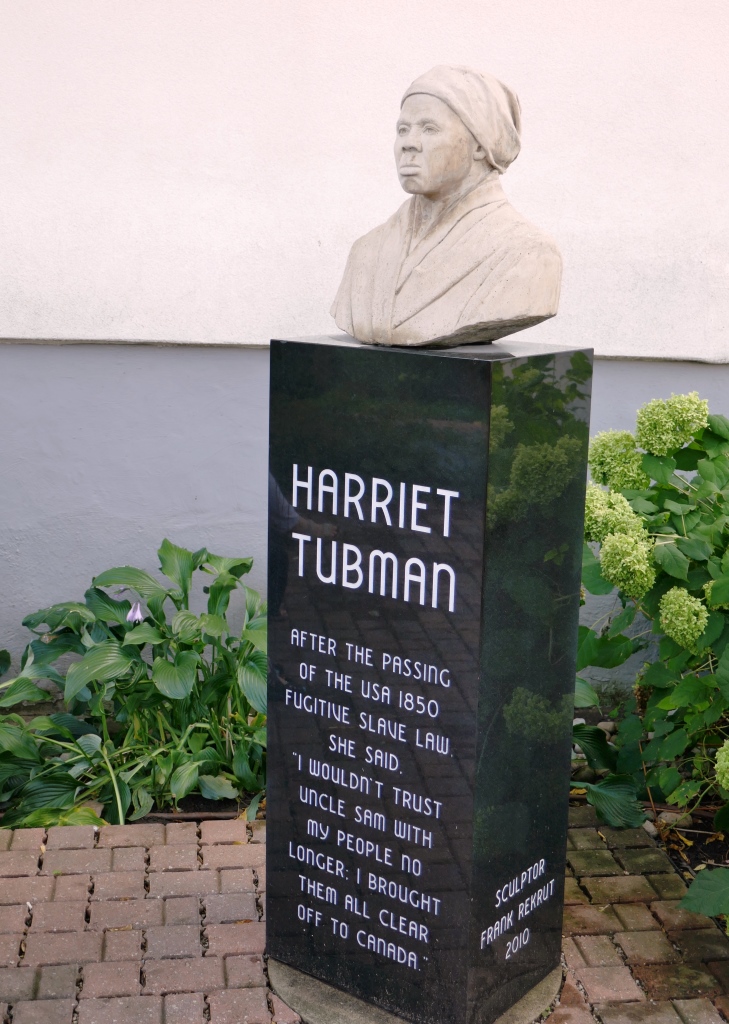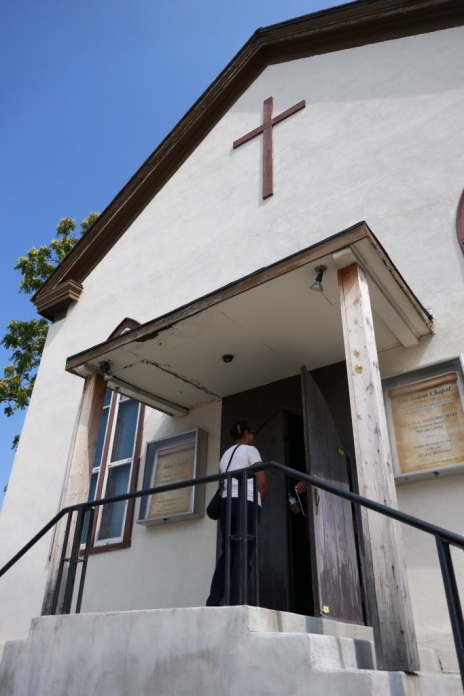It was a privilege to visit the Salem Chapel British Methodist Episcopal Church in St. Catharines, Ontario, on a day tour led by Lezlie Harper Wells of Niagara Bound Tours. I apologize that I do not know the names of the volunteers who gave us a wonderful tour of the inside of the church.
The church, an active place of worship and not a museum as such, does have exhibits relating to Underground Railroad conductor Harriet Tubman and the history of people of African descent in Ontario.
The Historic Sites and Monuments Board of Canada designated the Salem Chapel a historic site in 2000. The plaque outside reads:
Many of those aided to freedom became church members and put down roots in the local community. The auditory-hall design typifies the style associated with the Underground Railroad-related churches in Ontario.

What I didn’t know about Harriet Tubman (c. 1822-1913) was a lot, so this visit was a perfect opportunity to learn. She was designated a Canadian National Historic Person (I didn’t even know there was such a thing) in 2005, and her plaque outside the chapel reads:
The most famous ‘conductor’ on the Underground Railroad, she courageously led many of the people she rescued from American slavery on dangerous, clandestine journeys to safety and freedom in Canada.
Tubman helped these Black refugees settle after their arrival and played an active role in the fight to end slavery. She became the public face of the Underground Railroad in British North America, attracting attention and funding to the abolition movement.

Tours of Salem Chapel are run by volunteers upon appointment only, between April and October, so I’m extra grateful to Lezlie Harper Wells, a resident of St. Catharines, for this special opportunity to visit with the congregants, which I never could have arranged on my own.
Read more in Jamie Bradburn’s 2019 TVO article Why Harriet Tubman Made St. Catharines Her Home.
Also see this Canadian Heritage video featuring Rosemary Sadlier, OOnt, former President of the Ontario Black History Society and author.
Salem Chapel BME Church is museum no. 64 in my #100museums challenge (see 100 Museums Challenge).

